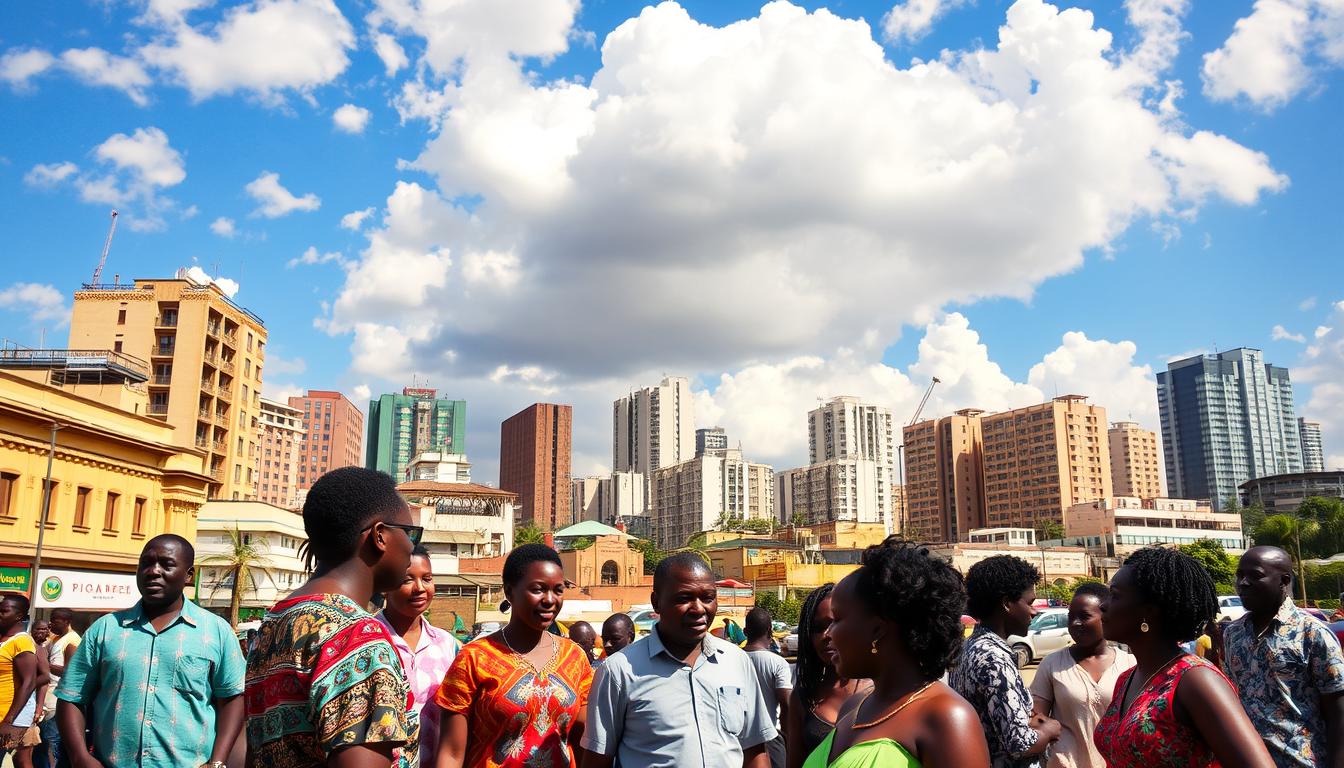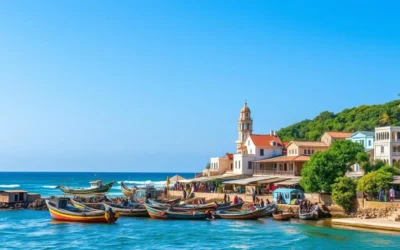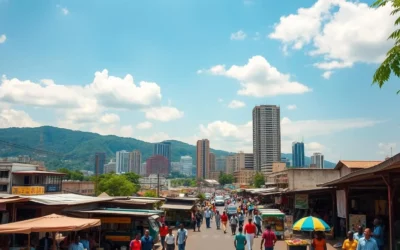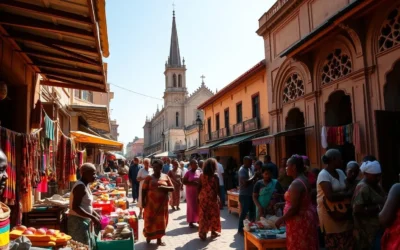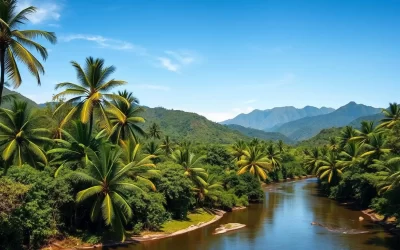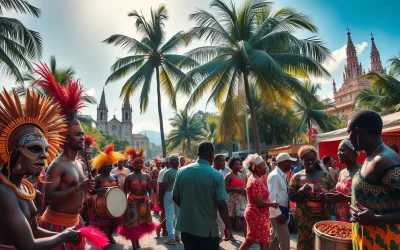✓ Accommodations ✓ Flights ✓ Rental Cars
Did you know that over 78 languages are spoken in Côte d’Ivoire? This West African country is a melting pot of cultures, with French as its official language. Introduced during colonial times, French plays a central role in daily communication, education, and government.
In this diverse country, French acts as a bridge between different groups. While many people speak indigenous languages, French is the common thread that connects them. This linguistic diversity reflects the rich cultural heritage of the region.
Whether you’re a speaker of French or curious about global languages, understanding this unique language landscape offers fascinating insights. Let’s explore how Côte d’Ivoire balances its colonial past with its vibrant present.
Introduction to Ivory Coast’s Linguistic Landscape
Côte d’Ivoire is a fascinating example of linguistic diversity. With over 78 languages spoken, it’s a country where history, culture, and geography intertwine to create a unique language mosaic. This diversity is not just a statistic—it’s a reflection of the region’s rich heritage.
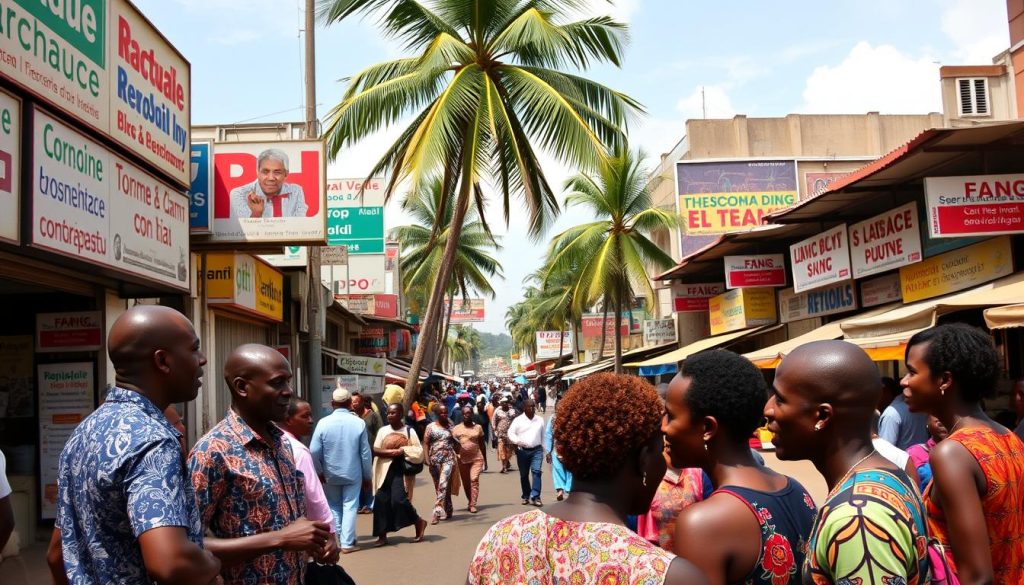
Understanding the Country’s Multilingual Nature
In this vibrant nation, French serves as the official language, but it’s just one piece of the puzzle. Indigenous languages thrive in daily life, especially in rural areas. Each ethnic group brings its own dialect, adding layers to the linguistic tapestry.
Schools and government institutions primarily use French, but local languages remain integral to community identity. This blend of languages highlights the country’s ability to balance tradition with modernity.
Key Factors Influencing Language Diversity
Several factors have shaped this multilingual landscape. Colonization introduced French, which became a unifying force. Migration and trade further enriched the language mix, as people from different regions brought their dialects.
Regional differences also play a role. In the north, you’ll find languages influenced by neighboring countries, while the south retains distinct local dialects. Understanding these variations helps you appreciate the cultural depth of the region.
Ivory Coast: Official and widely spoken languages
French serves as a unifying force in this West African nation. Despite the presence of over 60 indigenous languages, it remains the official language. This status reflects its importance in education, government, and business.
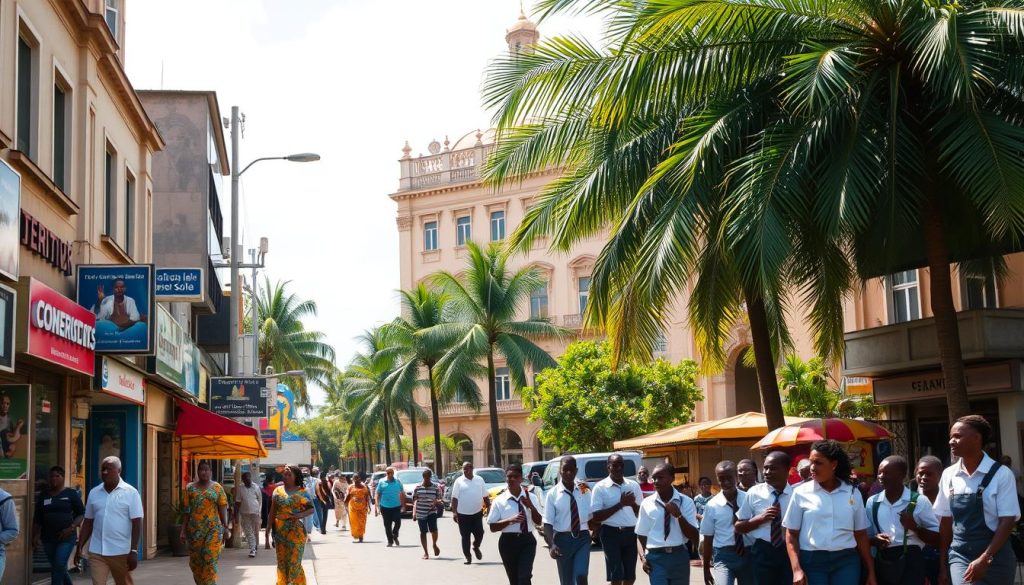
French as the Lingua Franca and Its Role in Society
In Côte d’Ivoire, French acts as a bridge between diverse groups. It is the primary language spoken in schools, cities, and official settings. This ensures smooth communication across the population.
For many, French is a second language learned in school. Yet, it has become essential for daily interactions. Whether in markets or offices, it connects people from different backgrounds.
The Impact of Colonial History on Language Use
Colonial rule introduced French to the country, leaving a lasting legacy. Today, it symbolizes both the past and the present. While indigenous languages thrive in rural areas, French dominates urban centers.
This duality reflects the nation’s ability to balance tradition with modernity. Understanding this history helps you appreciate why French remains so influential in the world today.
Major Indigenous Language Families in Ivory Coast
The linguistic landscape of this West African nation is shaped by its diverse indigenous language families. These languages are part of the Niger-Congo family, one of the largest in the world. Each branch, from Kwa to Senufo, carries a unique cultural identity tied to specific ethnic groups.

Exploring Kwa Languages: Agni and Baoulé
The Kwa branch is home to some of the most widely spoken languages in the region. Agni and Baoulé are two prominent examples. Agni, spoken by the Akan people, is known for its rich oral traditions. Baoulé, the language of the largest ethnic group, plays a central role in daily life and cultural expression.
These languages are not just tools for communication. They are symbols of heritage, connecting people to their ancestors and traditions. Over time, they have adapted to modern influences while retaining their core identity.
An Overview of Kru, Mande, and Senufo Groups
The Kru family includes languages spoken primarily in the southwestern area. These dialects are known for their complex tonal systems and cultural significance. The Mande group, found in the northwest, reflects historical trade routes and migration patterns.
Senufo languages, spoken in the northern regions, are celebrated for their artistic and musical traditions. Each family contributes to the nation’s rich linguistic tapestry, offering insights into its history and diversity.
Understanding these languages helps you appreciate the cultural depth of Ivory Coast. They are more than words—they are a window into the soul of the country.
Whether you’re a person interested in linguistics or a traveler exploring the region, these languages offer a fascinating glimpse into the past and present of this vibrant nation.
Regional Language Distribution and Cultural Influences
Regional differences in Côte d’Ivoire create unique language patterns across the country. From the bustling cities to rural villages, each area has its own linguistic identity. These variations are shaped by geography, history, and cultural traditions.
North Versus South: Variations in Language Use
In the north, languages like Senufo and Dioula dominate. These dialects reflect the influence of neighboring countries and historical trade routes. The south, on the other hand, is home to Kwa languages such as Baoulé and Agni. These dialects are deeply rooted in local traditions and daily life.
These regional differences highlight how geography shapes language use. Whether in the savannahs of the north or the forests of the south, each region tells its own story through its dialects.
Trade, Migration, and Their Effects on Linguistic Patterns
Trade and migration have played a significant role in shaping the linguistic landscape. For centuries, traders and migrants brought their dialects to new areas, enriching the local language mix. This exchange created a vibrant tapestry of communication.
Today, these influences are still evident. In urban centers, you’ll hear a blend of indigenous and foreign dialects. This dynamic reflects the country’s ability to adapt while preserving its cultural heritage.
Language in Education and Daily Life
Language plays a pivotal role in shaping education and daily interactions in this vibrant nation. From classrooms to government offices, it serves as a tool for communication, learning, and cultural expression. Understanding its impact helps you appreciate the challenges and successes of maintaining a multilingual society.
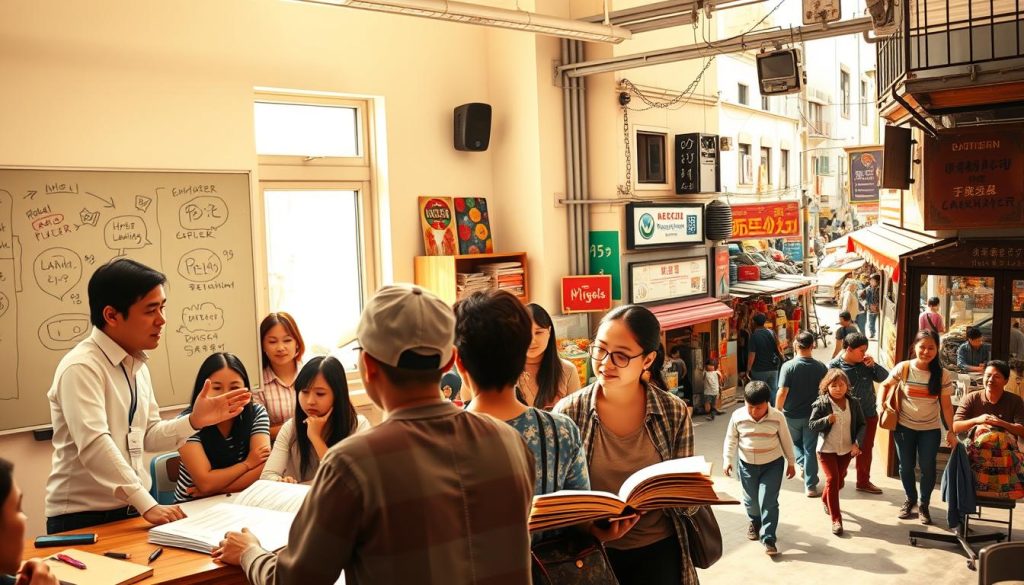
The Role of Language in Schools and Higher Education
In schools, French is the primary medium of instruction. However, programs like the Programme des Écoles Integrées (PEI) use local dialects in early grades. This approach has shown better academic outcomes, especially in rural areas.
Higher education institutions also rely on French, but there’s a growing emphasis on bilingualism. This prepares students for global opportunities while preserving local heritage.
Language in Government, Business, and Community Life
French dominates government and business sectors, ensuring smooth communication across the population. In urban centers, it’s the go-to language for formal interactions. Yet, local dialects thrive in community settings, fostering a sense of belonging.
In markets and neighborhoods, you’ll hear a mix of French and indigenous languages. This blend reflects the nation’s ability to balance tradition with modernity.
How Immigrant Languages Contribute to the Mix
Immigrant languages add to the linguistic richness of the country. With a diverse population, dialects from neighboring regions and beyond are part of everyday life. These languages enrich cultural exchanges and strengthen social bonds.
For instance, Dyula, a trade language, is widely used in markets. It bridges gaps between locals and immigrants, creating a vibrant linguistic tapestry.
“Language is not just a means of communication; it’s a reflection of identity and culture.”
Whether in schools, businesses, or communities, language shapes the way people connect. Its role in education and daily life highlights the nation’s commitment to diversity and inclusion.
Conclusion
The linguistic tapestry of this nation reflects its rich cultural heritage. French serves as a unifying force, bridging gaps between diverse groups. Yet, indigenous languages remain vital, preserving the identity of each family and region.
From the bustling cities to the rural villages, the way people communicate tells a story of unity and diversity. In the north, dialects like Senufo dominate, while the south thrives with Kwa languages. This regional variation is a testament to the country’s adaptability.
As the world becomes more interconnected, these linguistic traditions will continue to shape the future. Whether you’re a speaker of French or a person exploring this vibrant culture, understanding its language landscape offers a deeper connection to its soul.
The above is subject to change.
Check back often to TRAVEL.COM for the latest travel tips and deals.
